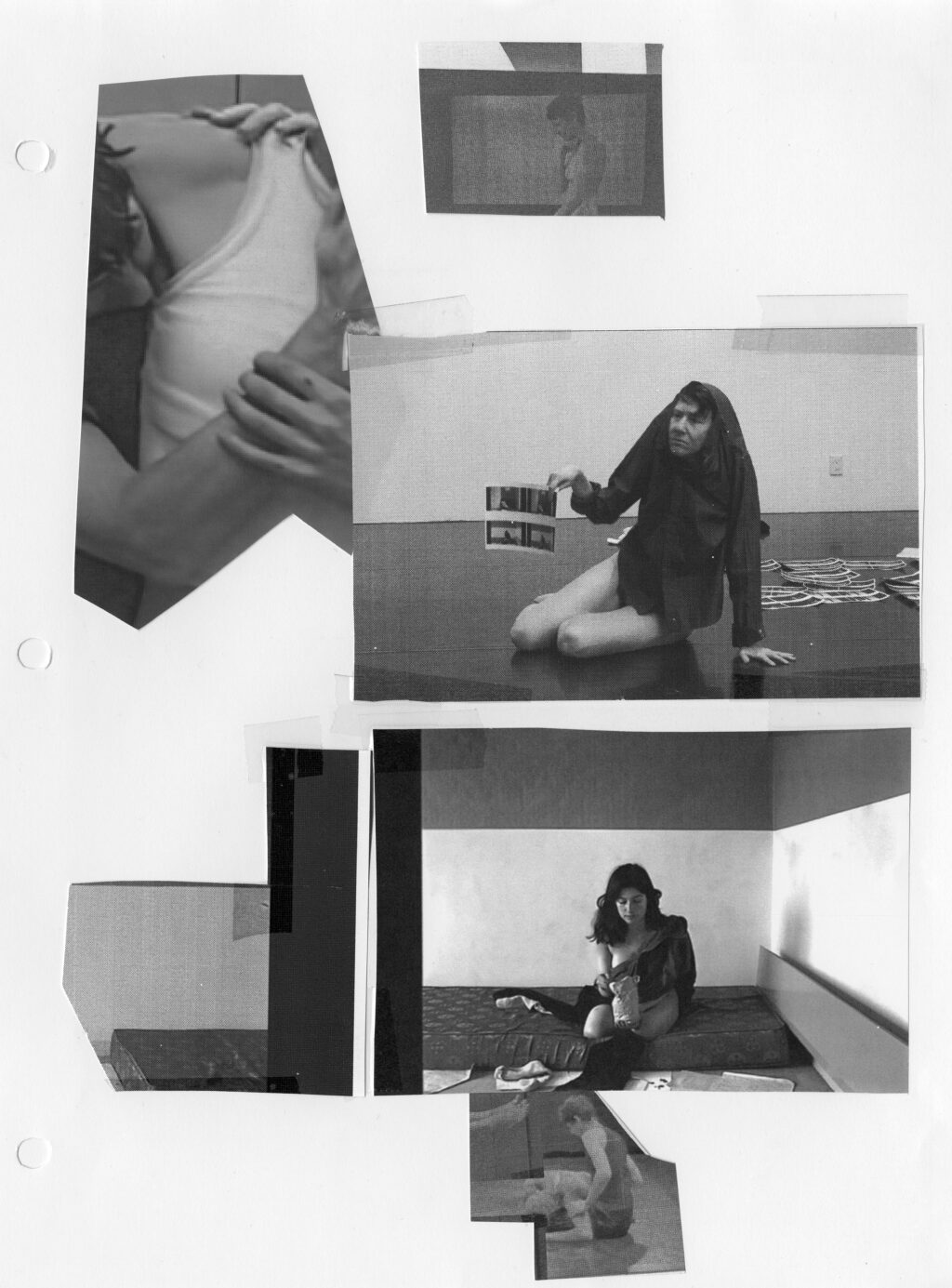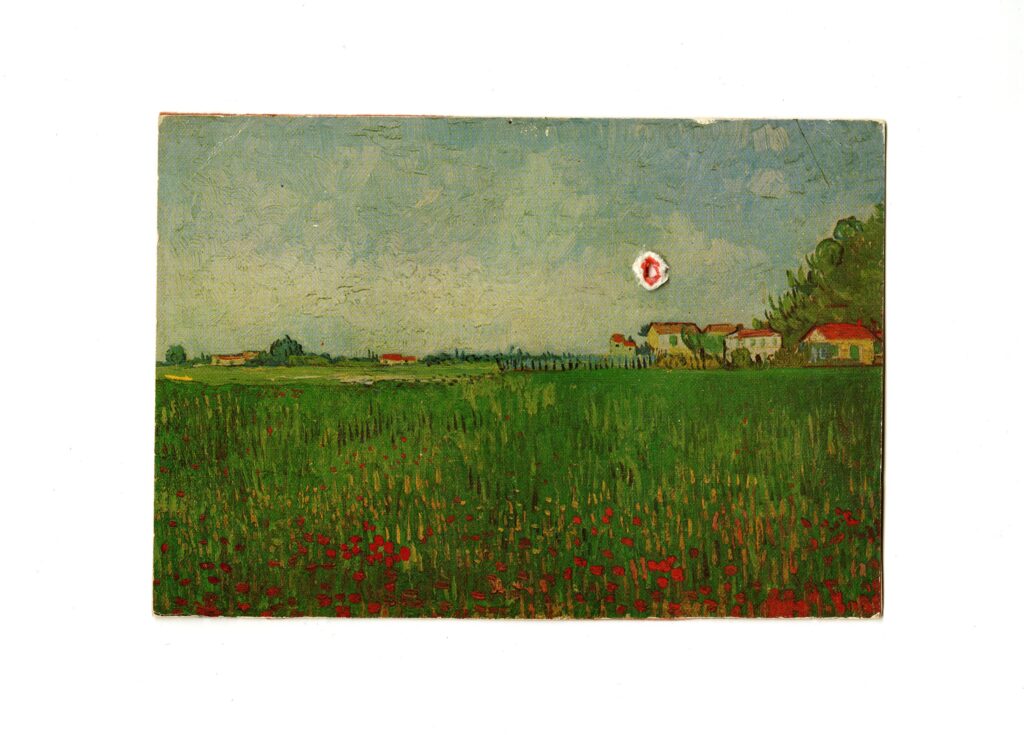Skin in the Game (2023)

SKIN IN THE GAME presents seminal prototypes from the personal archives of six acclaimed artists, dating back to the nineteen-seventies and crossing over into the present. These include experiments never previously shown, from paintings to banners, video works, photographs, collages, costumes, books, drawings, and concept notes. The six artists are not connected through a common theme, style, or political stance. What links them to one another is that moment of skin in the game, when each of them decided to become an artist, to enter the Hades of an uncertain existence, and the Heaven of aesthetic experiment.
At age five, Joëlle Tuerlinckx tossed balls of mud against a house and watched them slide down its clean white surface, leaving traces that dried in the sun. She continued to experiment with spots and stains, and then, while preparing one of her first public exhibitions at the Palais des Beaux-Arts in Brussels, she made a blotch on the wall. The spot, which she elected not to paint over, went on to become a signifier in her practice, a constant provocation, and deconstruction of the canon. For Otobong Nkanga, all key elements in her work can be traced back to Fattening Room (1999), a performance, installation, and digital photograph that reconfigures the traditions of female body sculpting from her homeland in southern Nigeria and links them to vernacular architecture. With her early meat works made from knitted wool, Ruth Buchanan, from Aotearoa New Zealand, consciously references Rosemarie Trockel, whose own contribution to the exhibition includes her first knitted paintings (1984–85), early drawings and book covers (1978–88), and Prototype for a Chicken House (1993). Documentary material from Andrea Zittel’s personal archive illustrates the artist’s initial experiments in breeding birds as an expression of modernist design that led her to produce self-contained living units for humans. Collier Schorr juxtaposes photographic collages from her first book, Jens F. (1991/2005), with recent assemblages from Akerman Ballet (2023), a new work in which she dances the scenes of Je, tu, il, elle, Chantal Akerman’s breakthrough film from 1974. All of these works are prototypes, situated midway between the precision of a blueprint and the symbolism of poetry.
A unifying thread running through the exhibition is the ability of these early prototype works to remain alive for the artist, to multiply and shape-shift into endless versions of an original. Schorr traces her past photographs in pencil, an act of transcription that renews her emotive and visual relationship to the original model. Tuerlinckx presents generations of images, such as the Paleolithic Hand, an iconic archaeological diagram that she stretches and deforms using a photocopier. Zittel’s letters, photographs, and drawings shows the gradual design process from cages for bantam breeding to forms of human domestic furniture. And Ruth Buchanan’s text-works range from essays written for no one, to beginnings of scripts for performances, audio, and video works. Highly generative, these prototypes blur the divide between original and documentation, artwork and archive.
The exhibition also speaks of the presence—and absence—of emblematic positions that led the way for women artists between the 1970s and 1990s. In Work-Titles (1978–88), Trockel evokes her ambivalence toward the art context of the time with headings like Theoriephobie, 1983, Collectors Voice, 1985, Master-Pieces and copies (My way), 1987, and Vanishing Ideals, 1988. Buchanan expresses her admiration and kinship with artists from Aotearoa New Zealand, such as Jacqueline Fraser, and et al. Nkanga’s journey takes her from art studies in Ile-Ife, Nigeria, to the Beaux-Arts in Paris, where she enters the studios of Jean-Jacques Lebel, Giuseppe Penone, and Jean-Luc Vilmouth. Her figureheads include Rebecca Horn, Sokari Douglas Camp, and the late feminist writer bell hooks. Tuerlinckx, in turn, references to Carl Andre with a new floor piece made for SKIN IN THE GAME. In addition, Nkanga and Tuerlinckx produce their first collaborative work on site at KW specially for this exhibition.
SKIN IN THE GAME fuses the environment of the exhibition with the studio, and offers a modus-operandi for future exhibitions and further prototypes. The spatial choreography is a collaboration between the curator and Joëlle Tuerlinckx. Throughout her practice as an artist, Tuerlinckx’s central question has been how to translocate the privacy of her studio, with its freedom of unresolved composition, into the hermetic framework of the gallery. In response, she configures spatial situations, cutting sections out of walls, working with natural and artificial lighting, and building arrangements following her system of the Magnetic Studio Wall. From the curatorial side, the concept of SKIN IN THE GAME is conveyed through a method of “transgressive adjacency,” placing artworks and artifacts from different origins and disciplines near each other to generate both collusions and moments of “neighborly dislike.” Like an intruder or squatter, Skin in the Game takes over the pale pink and black walls of the previous exhibition at KW. By making do with what is there, the show points to questions of sustainability and economic stringency in exhibition making today.
Visitors are offered “Metabolic Chairs” to settle for a while, and read interviews with the artists. The public program NERVES, BREATH, MUSCLES, BLOOD shall be run online by the Metabolic Museum–University (www.mm-u.online), a research and educational platform supported by KW to be launched in October 2023. The publication SKIN IN THE GAME. Conversations on Risk and Contention (Hatje Cantz/KW) will be published in November 2023 and follows on from The Metabolic Museum (2020, Hatje Cantz/KW).
Works in the exhibition have been generously lent by the artists, and from the following galleries: Coastal Signs, Tāmaki Makaurau Auckland (Ruth Buchanan); Lisson Gallery, London (Otobong Nkanga); 303 Gallery, New York, (Collier Schorr); Sprüth Magers Berlin, Cologne, (Rosemarie Trockel, Andrea Zittel); Nagel Draxler, Berlin, Cologne, and Munich and Galerie nächst St. Stephan Rosemarie Schwarzwälder, Vienna (Joëlle Tuerlinckx).
Concept Notes
Items of Neighbourly Dislike
Clémentine Deliss
Documentation, KW Institute of Contemporary Art, Berlin
Installation Photographs
SKIN IN THE GAME, KW, Berlin
Research Diagram, Clémentine Deliss
KW Institute for Contemporary Art, Berlin


